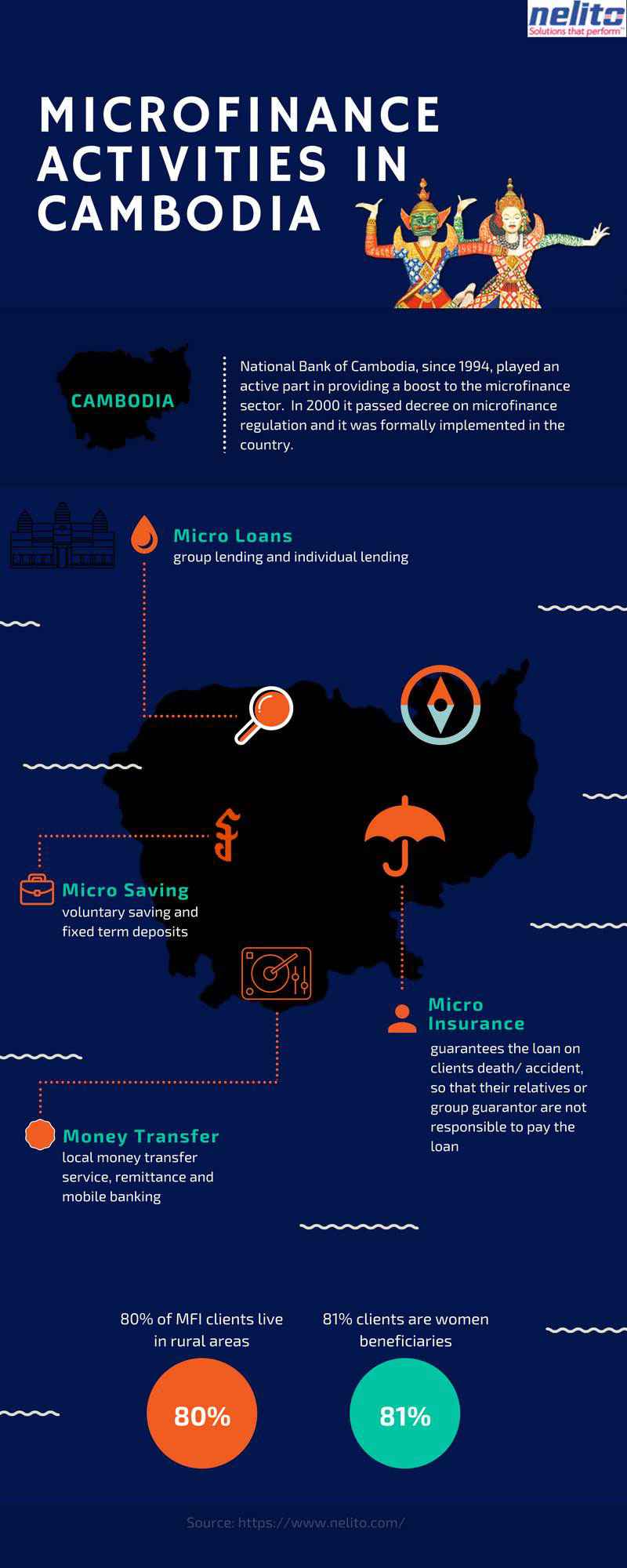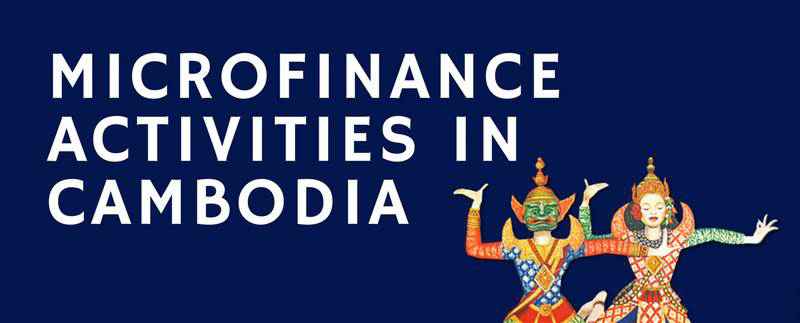Rise and Role of Microfinance in Cambodia
Updated On : November 2017Microfinance is not a dole. Microfinance service providers are not in an altruist mission. They are special purpose vehicle to address the need for easy access to finance for poor and underprivileged in developing economies. They are business enterprises striving to work on a win-win model.
Cambodia presents a good case study for understanding the effectiveness of microcredit in a country which had tumultuous birth and growth.
Cambodia became a free country in 1953. The country had gone through a politically volatile atmosphere. It was under French protectorate for nearly 90 years, under Japanese occupation for 5 years. The country experienced a bitter civil war for more than two decades and suffered a major genocide under Pol Pot regime. The relief and calm came in at 1991 when it was held under United Nations Transitional Authority. In 1993 it became a country, what is now called Kingdom of Cambodia. In recent years, reconstruction efforts have progressed and led to some political stability through a multiparty democracy under a constitutional monarchy.
Needless to say, the financial sector in Cambodia was in near shambles. The National Bank of Cambodia was established in 1954. Owing to the political turmoil during the Khmer rouge regime the bank was closed and even the building was destroyed. In 1993, it was rebuilt from scratch. Gradually, the banking system was strengthened and modernized and Cambodia became one of the strongest growing economies. As of now per bank branch ratio in Cambodia is 6 branches for every 1 lakh adult population
Given, the weak state of the financial sector, access to credit for the poor and marginalised was a great challenge facing a fledgling economy. Initially, the source of micro credit was from donors and NGOs. Without a working banking system, organizations such as GRET (1991), World Relief (1992), ACLEDA and CRS (1993) initially ran microcredit projects by physically handling cash transfers.
In Cambodia, the opportunities for formal employment are scarce and many people turn to self-employment through creating small businesses. Many of these self-employed entrepreneurs are women, who make a living with scarf weaving, noodle making, hairdressing, tailoring, and silk weaving. Informal credit could not provide adequate working capital for these small businesses, and the lack of financing often prevented them from growing and becoming sustainable
National Bank of Cambodia, since 1994, played an active part in providing a boost to the microfinance sector. In 2000 it passed decree on microfinance regulation and it was formally implemented in the country. ACLEDA transformed from an NGO to a microfinance bank. This was a pointer for other NGOs to enter formally into the business of microfinance.
With a view to empower and embrace all the Microfinance operators, Cambodian Microfinance Association (CMA) was established in 2004. It is an NGO and acts under Cambodian law. Membership of CMA is mandatory for microfinance financial service providers. It acts as a friend, philosopher and guide for its members. Today CMA represents 86 members.
- 8 Deposit taking Microfinance Institutions.
- 54 Microfinance Institutions.
- 8 leasing companies
- 16 Rural credit operators.
Microfinance Activities
Currently there are many MFIs in Cambodia providing financial and non-financial products and services to satisfy clients' needs.
- micro-loans (group lending and individual lending)
- micro-saving (voluntary Saving and fixed term deposits)
- money transfer (local money transfer service, remittance and mobile banking)
- micro-insurance (guarantees the loan where clients die or are accidentally injured, so that their relatives or group guarantor are not responsible to pay the loan).
Non-financial products and services which MFIs usually offer to their clients are as follows:
- Client education and reinforcement
- Flexibility to maintain View/Maintain borrower and Group
- Comprehensive Database for All Counterparties
- Parameter Maintenance
- Limit Allocation
The Impact of Cambodian Microfinance
Microfinance operations in Cambodia have well addressed the target group meant for the purpose. Nearly 80% of MFI clients live in rural areas and 81% are women beneficiaries. The repayment rate from clients was almost up to 98% before the financial crisis in 2008. MFIs in Cambodia have been shown to empower women as the head of the family who often have good cash management skills.
Challenges for microfinance in Cambodia
- Funds costly/ Need longer maturity loan
- Low level of financial literacy
- Strong demand in different types of loan product
- Over-indebtedness
- Interest rate cap
With a view to get large-scale, reliable, and comparable information on client perceptions of the access to and quality of services offered, Hivos and MIX developed the Voice of the Client (VoC) initiative. Mix is a partner to Cambodia Microfinance association.
The data collection was done using Smart Campaign Client protection principles. The main parameters for collecting and collating the data were :
- appropriate product design
- prevention of over-indebtedness
- transparency,
- fair and respectful treatment of clients
- mechanisms for complaint resolution.
The major negative responses were received for fair and respectful treatment of clients. More than 80% of the respondents to the query replied "No". Another important outcome was that more than 85% responded that financial service provider's staff demanded an amount more than what was due from the client and did not provide a receipt for the payment.
Cambodia economy will need a sustained support from microfinance service providers. Nearly 65% of the population is in the age group of 30. Though an agrarian economy, the service industry is quite prominent. Garment export and tourism are growing.
The ecosystem is now well established. National Bank of Cambodia is playing a regulator's role, frequently monitoring and providing directives. Recently it has capped the rate of interest at 18% on micro credit.
The population of Cambodia compares with the population of Bangladesh. The annual household income per capita of Bangladesh as measured for 2015-16 is USD 1314. The country has been upgraded to lower-middle income category from poor. From the ruin of tyranny and genocide, Cambodia has come a long way in just about 20 years, taking 1995 as the base for the counter.
Microfinance and financial inclusion is no more a choice. It is an inevitable infrastructure for growing economies. National Bank of Cambodia has been playing a proactive role in the area of microfinance, but there are still a lot of lacunas. Watch out, investors, mobile service providers and fintech software companies. Present day Cambodia is a big opportunity.
These players may focus on demand side of the sector and innovate new lines of products and services. Software applications may enable flexi credit products like Kisan Credit Card of India apart from fixed line of credit.
Droplets make an ocean, though a clichéd statement, is relevant to the Cambodian economy. A steady growth of microcredit is sure to have a major impact in directing the macroeconomics of the country the in the years to come.




Comments :